Posts: 16,484
Threads: 573
Joined: Oct 2011
City: Jackson
State, Province, Country: NJ
I think it is 19LZX.
I bought it from Terry about a year or so ago.
I remember Terry having bought it in Kutztown abouit 5 years prior to that. It actually was working. I helped him to stuff it in his Ford Falcon (I think it was that).
It has been sitting in my workshop for a couple of years, and with me making no progress on my Thorens turntable, I decided its number has come up.
So.
Today I took the chassis out.
Here it is.
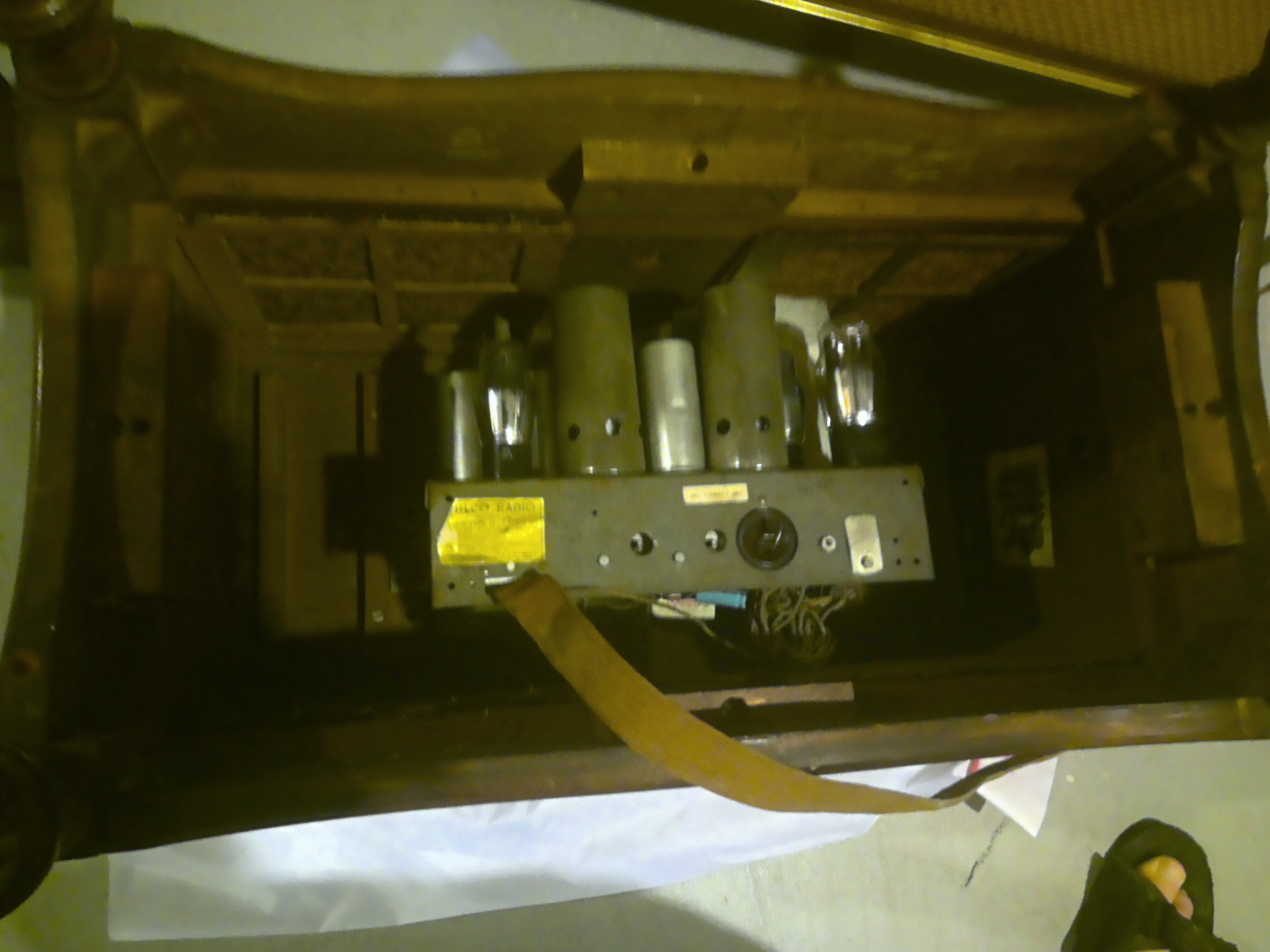
The look inside.
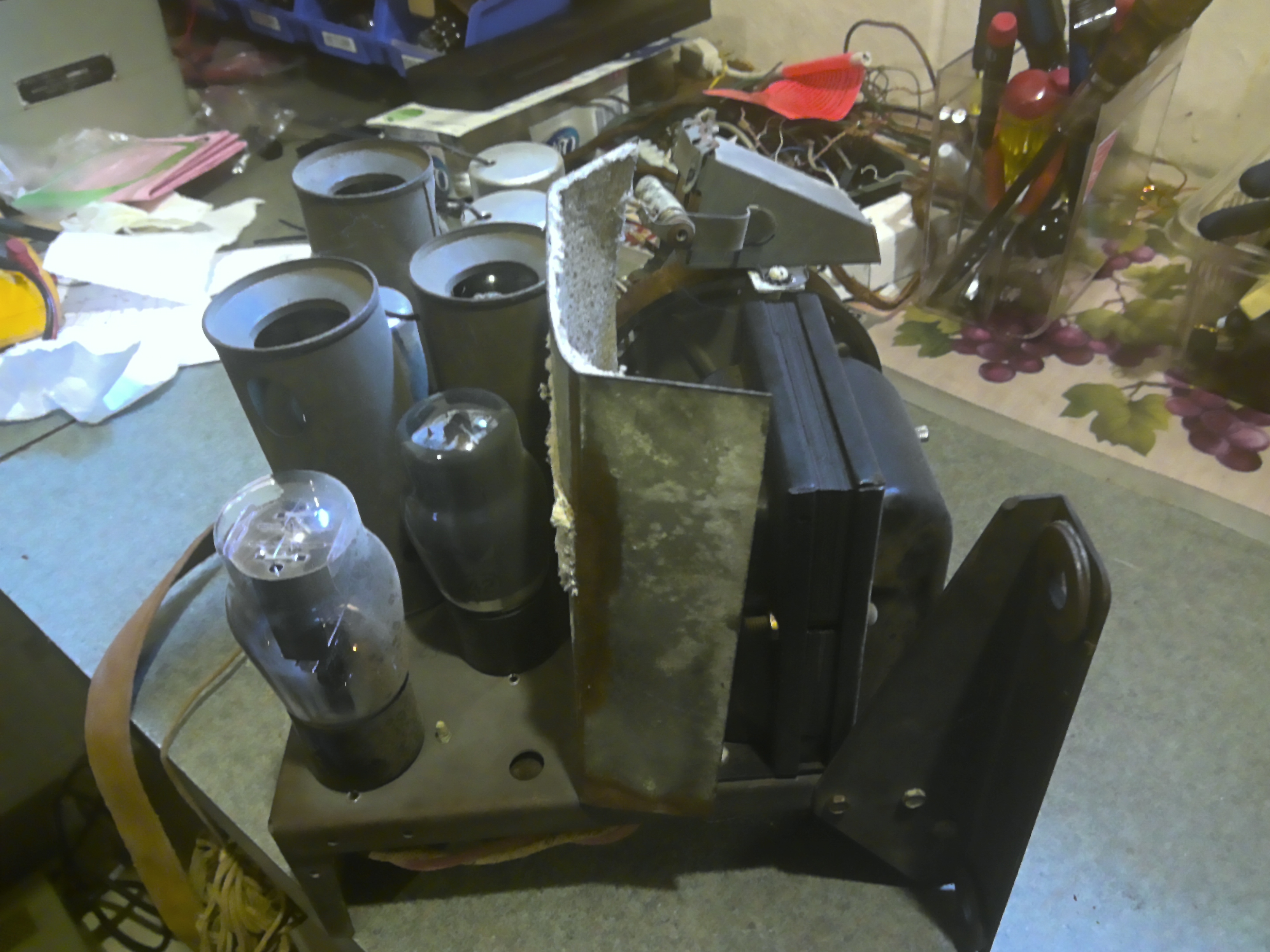

Asbestos. Never thought it would be in a 1933 Philco.

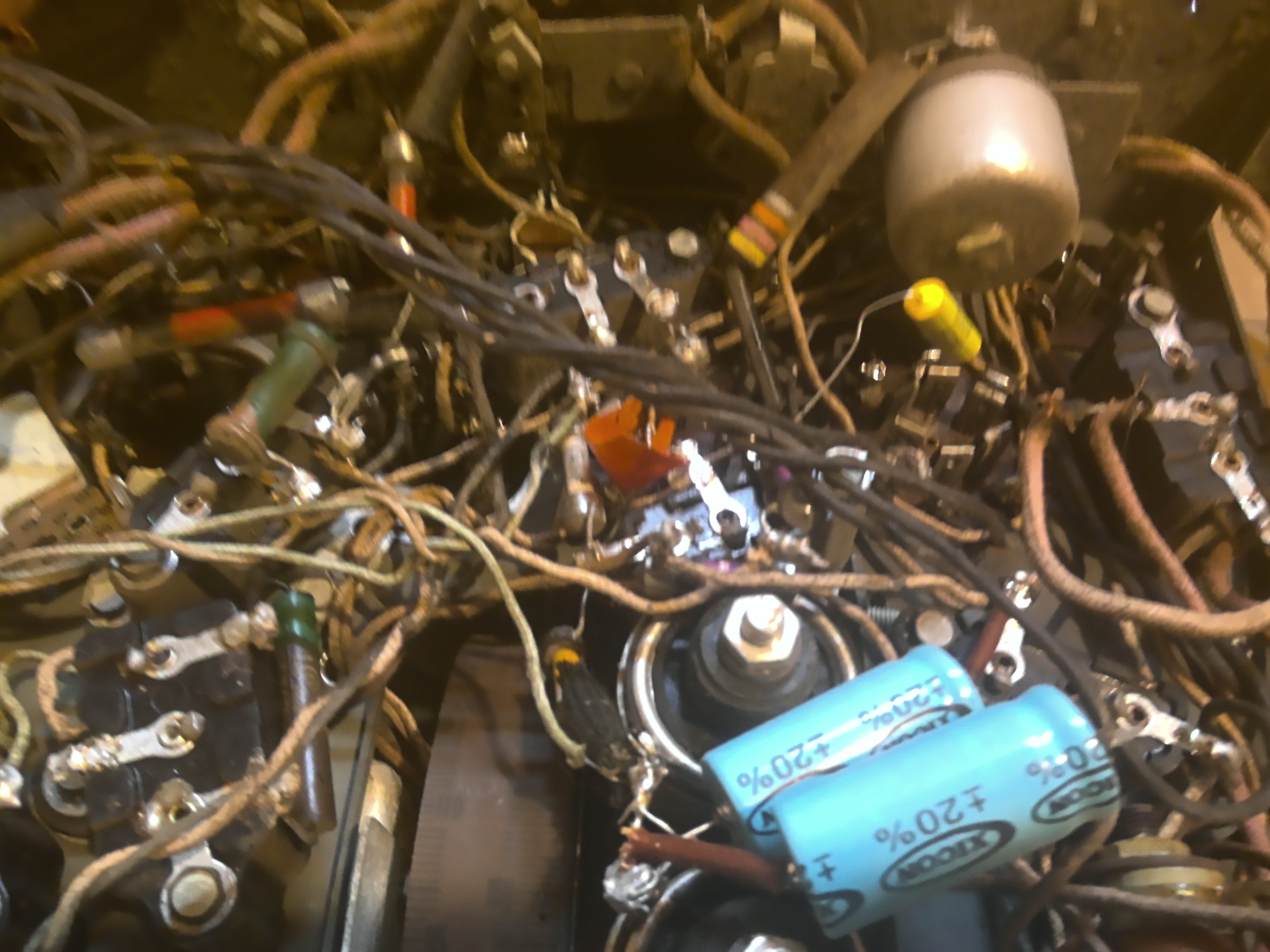
As you can see there was an attempt to fix something.
So, judging by the picture of the underchassis, methinks it is V121 V3 as there is that capacitor 0.05uF added.
Well, the work begins.
People who do not drink, do not smoke, do not eat red meat will one day feel really stupid lying there and dying from nothing.
Posts: 16,484
Threads: 573
Joined: Oct 2011
City: Jackson
State, Province, Country: NJ
Restuffed 5 backelite blocks.
Another 4 are left.
Then there is the filter block. Should not be hard, it is the tin can 70 style, the block should be simple pullout wrapped in fishpaper.
Electrolytics are another problem.
People who do not drink, do not smoke, do not eat red meat will one day feel really stupid lying there and dying from nothing.
Posts: 16,484
Threads: 573
Joined: Oct 2011
City: Jackson
State, Province, Country: NJ
So...finished the backelites, extracted the tone control and the electrolytics. They might've been the replacements but are original Philcos.
Extracting of the tone control proved to be somewhat onerous: the tone control is squeezed between the front panel and the closest electrolytic cap and its holder clamp. Without full removal of that holder clamp the tone control could not be tilted out of the hole for the shaft. The holder clamp is held in the middle by a thick steel wire.
This one.
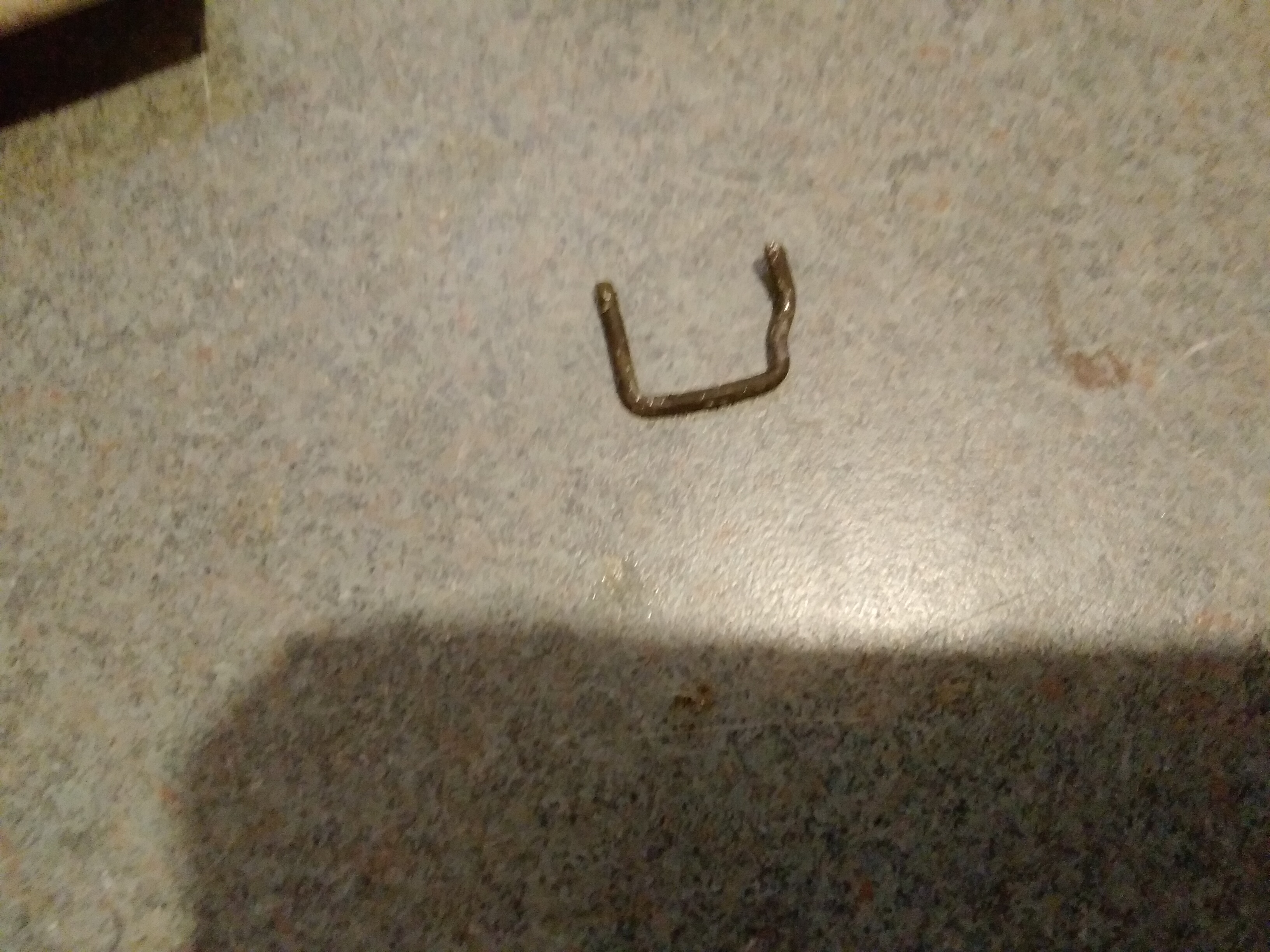
Unbending it without any fulcum and wires around was not simple. But I prevailed.
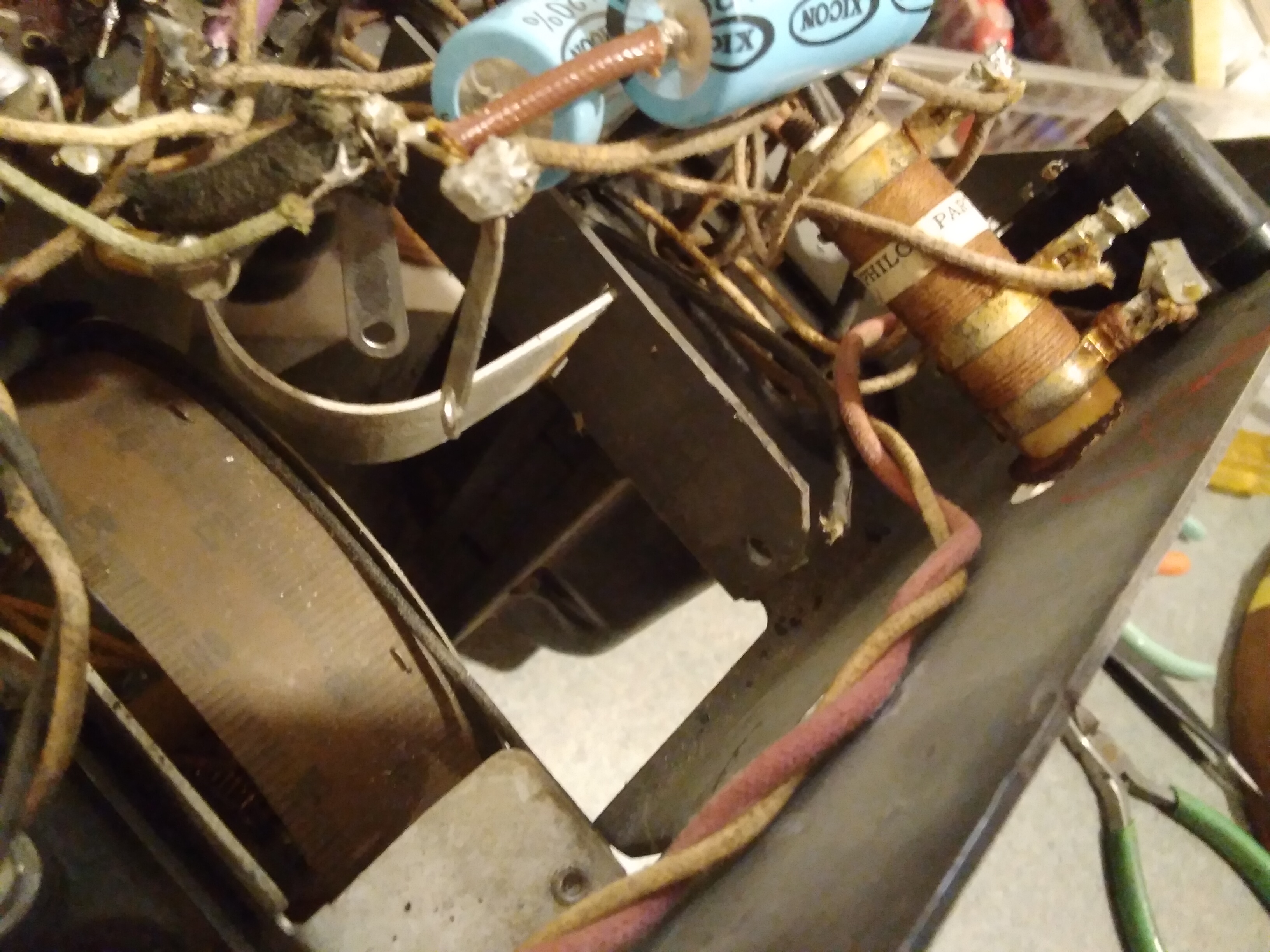
Now, about that tone control.
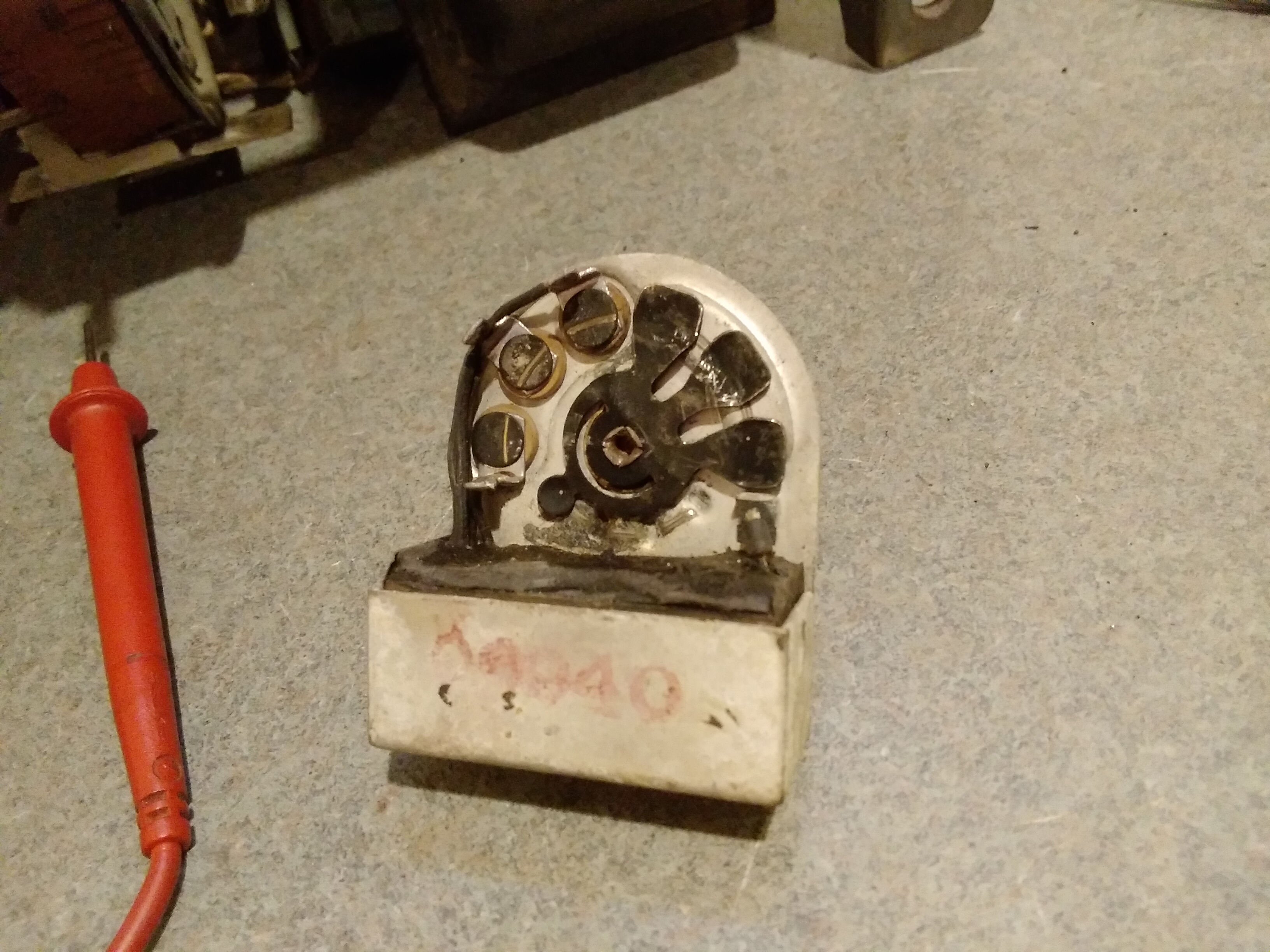
The stamped number could not be located in Ray Bintliff's book. Seems to end with 940.
Also it is 3-cap thing. From the "Evolution of 89" I did not see any 3-cap ones used, only 2-cap.
Any help with the info is appreciated.
People who do not drink, do not smoke, do not eat red meat will one day feel really stupid lying there and dying from nothing.
Posts: 1,887
Threads: 214
Joined: May 2015
City: Seattle
State, Province, Country: WA
Nice to see this coming along. Looks great!
The model 19 sure is a cramped little set. The tone control and electrolytics have been a struggle on the two I serviced as well. Good sets once restored though.  
Posts: 16,484
Threads: 573
Joined: Oct 2011
City: Jackson
State, Province, Country: NJ
Nathan
Do the cathedrals also have the asbestos-coated shield or is it an LZ feature?
People who do not drink, do not smoke, do not eat red meat will one day feel really stupid lying there and dying from nothing.
Posts: 1,887
Threads: 214
Joined: May 2015
City: Seattle
State, Province, Country: WA
No - I don't recall any asbestos shield in the 19 cathedrals. Never saw anything like what your photo shows.
Here's the photo album for one of them if you're curious - https://flic.kr/s/aHsmKEp53D
Posts: 16,484
Threads: 573
Joined: Oct 2011
City: Jackson
State, Province, Country: NJ
So, guys, before I resort to going outside this Phorum asking Philco questions:
Does anyone know what 06940 tone control hides inside?
Don't go to Ray's book: it does not have it.
Riders (I went through all 4 volumes containing 19/89 info) also has none.
Measuring with meter yields 29nF/27nF/17nF.
Considering ageing and nearly doubling the value, my guess is 15nF/15nF/10nF.
People who do not drink, do not smoke, do not eat red meat will one day feel really stupid lying there and dying from nothing.
Posts: 1,887
Threads: 214
Joined: May 2015
City: Seattle
State, Province, Country: WA
Ron’s evolution of the model 19 article shows the values:
https://philcoradio.com/library/index.ph...-model-19/
Posts: 16,484
Threads: 573
Joined: Oct 2011
City: Jackson
State, Province, Country: NJ
Nathan,
I wrote earlier. I haven't found any 3-cap ones in there. Have you?
In a doc in Riders it shows a regular PN. It is a 2-cap one.
People who do not drink, do not smoke, do not eat red meat will one day feel really stupid lying there and dying from nothing.
Posts: 1,887
Threads: 214
Joined: May 2015
City: Seattle
State, Province, Country: WA
Ah I see now. Yes that is different from the tone controls I’ve seen on the 19B:
https://flic.kr/p/WMvrpx
I guess the chair side used a different part?
Posts: 16,484
Threads: 573
Joined: Oct 2011
City: Jackson
State, Province, Country: NJ
Might be.
I also checked 14LZX docs, that are common to 19LZX, no mentioning.
I should probably just check 14LZX sch, see if they are shown there.
People who do not drink, do not smoke, do not eat red meat will one day feel really stupid lying there and dying from nothing.
Posts: 16,484
Threads: 573
Joined: Oct 2011
City: Jackson
State, Province, Country: NJ
OK, I think I figured what is inside.
The values are cut in half as per rule of thumb, that the caps roughly double in capacitance over time from the 1930-s by now.
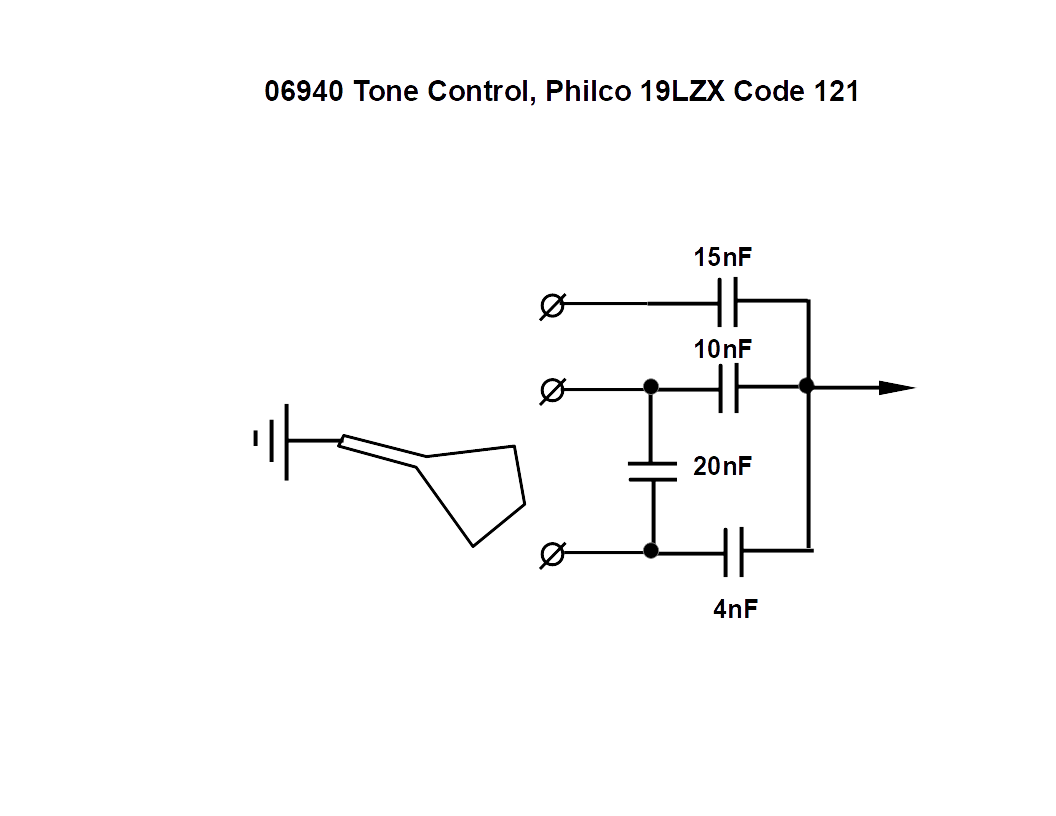
This is an equivalent of simply putting 13nF i/o 10nF and 10nF i/o 4nF with no 20nF in between them.
Which is what I was about to do, but I measured between the two caps and realized the capacitance is more than the serialized value, so I concocted this.
Not sure....probably would be easier to use 3 caps i/o 4.
People who do not drink, do not smoke, do not eat red meat will one day feel really stupid lying there and dying from nothing.
Posts: 13,776
Threads: 580
Joined: Sep 2005
City: Ferdinand
State, Province, Country: Indiana
Translation for we Americans who do not use the nF standard:
15 nF = 0.015 uF
10 nF = 0.01 uF
20 nF = 0.02 uF
8 nF = 0.008 uF

Thanks for posting the graphic, Mike. I was not familiar with any different standard in 19LZX tone controls.
--
Ron Ramirez
Ferdinand IN
Posts: 16,484
Threads: 573
Joined: Oct 2011
City: Jackson
State, Province, Country: NJ
Ron,
I could not find any mentioning of it anywhere whatsoever.
I even resorted asking in the ARF. So far no answer.
I mean.....it is not even that important, any similar control used between a 42 plate and the GND/Rect negative will work.
Just....unusual.
People who do not drink, do not smoke, do not eat red meat will one day feel really stupid lying there and dying from nothing.
Posts: 16,484
Threads: 573
Joined: Oct 2011
City: Jackson
State, Province, Country: NJ
Obviously my question has everyone scratching their heads as no one on both forums has been able to tell me anything.
I think the cap between the two contacts, at least in theory, could be useful in the following manner: it lets the sliding contact engage patially charged caps. That is, if the cap is just hanging by itself, its voltage is equal 0, and when connected, it will charge from 0 to full value, whereas when partly charged (you can see how those are lesser values than the bridging cap, thereby charging to the larger portion of the voltage) they will maybe pull less current, create less spark and make less scratchy noise.
I dont have the answer why.
But I will have to stuff it with something, I guess.
People who do not drink, do not smoke, do not eat red meat will one day feel really stupid lying there and dying from nothing.
Users browsing this thread: 2 Guest(s)
|
|
Recent Posts
|
|
Need Help to ID this radio 11 tube Philco
|
| If you want a radio that's difficult to work on, get a 37-620. The one side of the chassis is packed pretty tightly and ...Greg — 07:29 PM |
|
Need Help to ID this radio 11 tube Philco
|
| Philco 16 is not intimidating at all. Despite being an 11-tuber.
37-116 is indeed intimidating.
16 has good space unde...morzh — 04:11 PM |
|
48-482 rear panel help
|
| Thanks for the responses Gary and Bob. I'm a little surprised that there's no back panel - although I know older Philco'...keithchip — 04:09 PM |
|
48-482 rear panel help
|
| Gary is correct, there was not a rear panel on the 48-482. I restored one of those and its a great sounding radio that ...klondike98 — 03:24 PM |
|
The list of my radio & TV collection!
|
| A little light positivity in our feed... To nostalgic retro music...
With English subtitles
My new video on the contin...RadioSvit — 02:14 PM |
|
My Philco 37-116 Restore
|
| Ron and Mike I mentioned a 2 meg resistor not on the schematic. I stumbled on a changes note in Riders that mentioned th...dconant — 12:02 PM |
|
Need Help to ID this radio 11 tube Philco
|
| Here you go:
Your the code 125Radioroslyn — 11:12 AM |
|
My Philco 37-116 Restore
|
| Hi Ron,
Thanks for the input. I think I'm going to call it good enough. It does seem weird I can usually dial in othe...dconant — 08:01 AM |
|
Need Help to ID this radio 11 tube Philco
|
| Welcome,
the radio looks intimating 11 tubes, wish you well.Jimradio — 07:49 AM |
|
462ron
|
| Hi Dan, it’s been 10 years since I restored the electronics on my 37-116 so I’m going on some foggy memories. I remember...462ron — 07:37 AM |
|
Who's Online
|
There are currently 493 online users. [Complete List]
» 2 Member(s) | 491 Guest(s)
|
|
|

|
 
|








![[-] [-]](https://philcoradio.com/phorum/images/bootbb/collapse.png)


